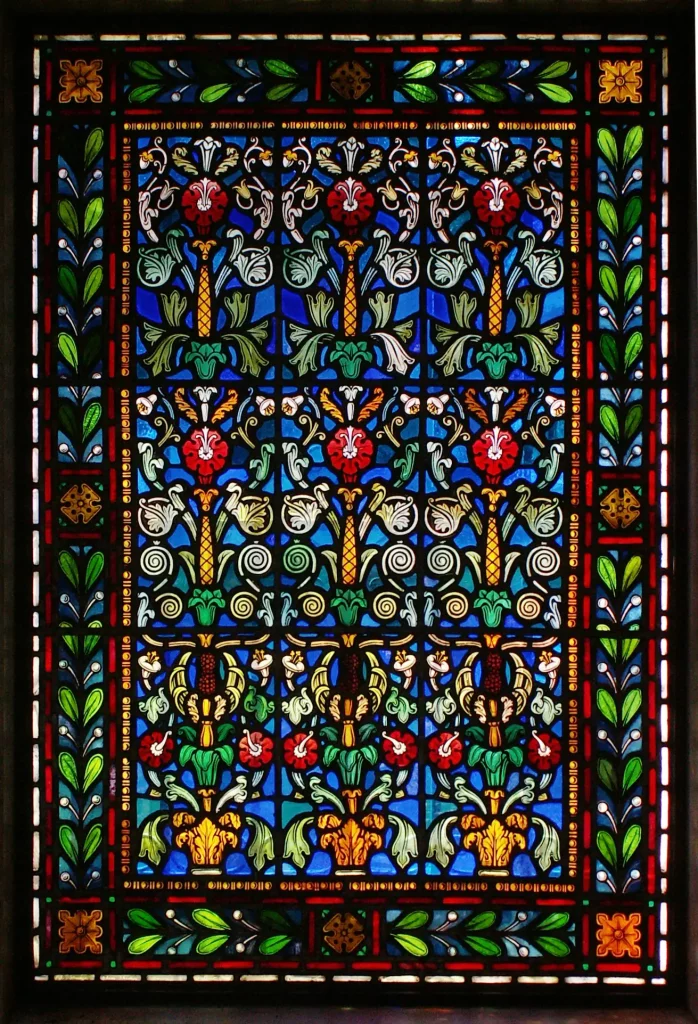
What began in 1899 as a standard rusticated temple in the “modern Ionic” style was expanded in 1973 by the very unusual addition of left and right wings, where the crypts are accessible directly from the outside. The bronze doors have grilles with a striking passionflower pattern. According to the cemetery’s Web site, Mr. Robert Davidson King made his fortune in county government, which was a profitable business in those days.










